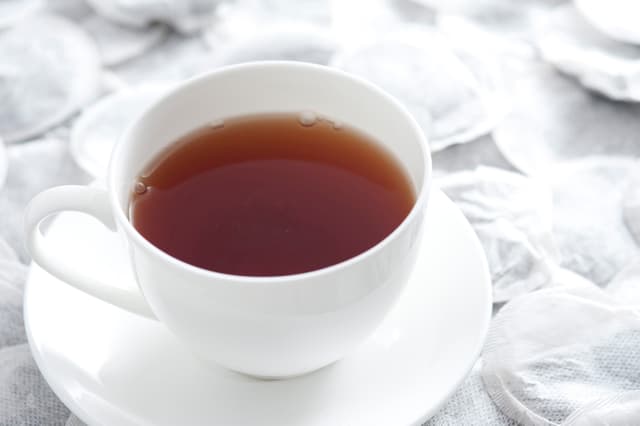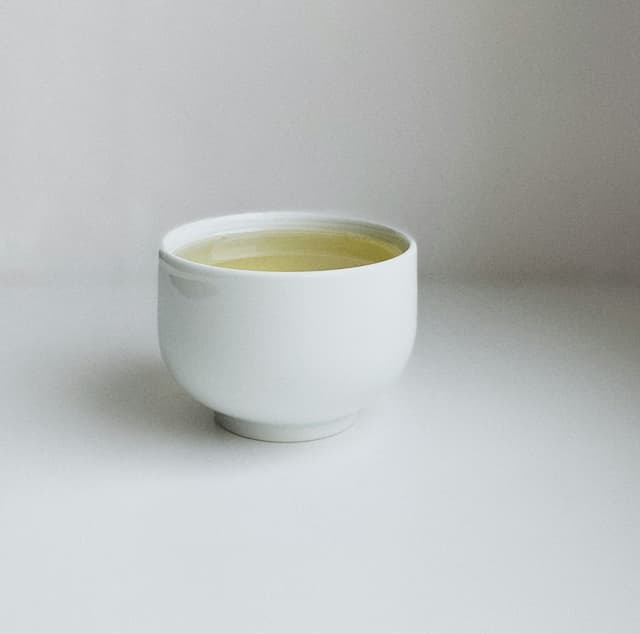Black Tea vs. White Tea
Black Tea
Black tea is the kind of drink that’s been around for ages, traded across continents, sipped at fancy afternoon teas, and downed in travel mugs on rushed mornings. It comes from the Camellia sinensis plant, just like green and white tea, but what sets it apart is the full oxidation of the leaves. That process turns them dark and gives black tea its deep reddish-brown color when brewed, along with that strong, punchy flavor that can be malty, smoky, fruity, or floral—depends on where it’s from and how it’s made. There are loads of varieties. Assam from India is bold and malty—perfect with a splash of milk. Darjeeling, often called the "champagne of teas," is lighter, floral, and sometimes a bit fruity. If you’re in the mood for something smoky, Lapsang Souchong from China tastes like someone brewed tea in a campfire—but in a good way. Ceylon from Sri Lanka strikes a nice balance—brisk and refreshing. The cool thing is, black tea keeps its flavor for years, unlike green tea that goes du...
White Tea
White tea is a type of tea made from the young leaves and buds of the Camellia sinensis plant—the same plant used for green and black tea. What makes white tea different is how little it’s processed. The leaves are just picked, withered, and dried. There’s no rolling or heavy oxidation like with black tea, which gives white tea a lighter, more delicate flavor. It’s often described as smooth, slightly sweet, and floral. The name "white tea" comes from the fine, silvery-white hairs on the unopened tea buds, not the color of the brewed tea. When you steep it, the liquid usually comes out a pale yellow. Most white tea comes from China, especially the Fujian province, though other places like Taiwan, Nepal, and parts of India also produce it now. There are different grades of white tea, depending on what part of the plant is used. The highest quality is called Silver Needle (made from just the buds), while others like White Peony or Shou Mei include more leaves. White tea usually h...
Reviews
Reviews
Reviewed on 2/25/2025
| Item | Votes | Upvote |
|---|---|---|
| No pros yet, would you like to add one? | ||
| Item | Votes | Upvote |
|---|---|---|
| No cons yet, would you like to add one? | ||
| Item | Votes | Upvote |
|---|---|---|
| Gentle | 1 | |
| Non-oxidized | 1 |
| Item | Votes | Upvote |
|---|---|---|
| No cons yet, would you like to add one? | ||
Frequently Asked Questions
Yes, black tea is generally stronger in flavor compared to white tea. Black tea undergoes full oxidation, resulting in a robust and punchy flavor profile that can be malty, smoky, or fruity. In contrast, white tea is less processed and has a lighter, more delicate flavor that is often described as smooth and slightly sweet.
Yes, white tea typically has less caffeine than black tea. While the caffeine content can vary based on how the tea is made and brewed, white tea is often consumed for its light taste rather than for a caffeine boost, making it a gentler option compared to the stronger caffeine kick of black tea.
Both black tea and white tea can provide a calming experience, but they do so in different ways. Black tea offers a comforting ritual with its strong flavor and warmth, making it ideal for cozy moments. White tea, on the other hand, is gentler and more delicate, which can also create a soothing atmosphere. The choice depends on personal preference for flavor intensity.
Yes, black tea is often considered more versatile in preparation than white tea. It can be enjoyed plain, with milk, sugar, or lemon, and can also be used in various recipes. White tea, while delightful on its own, is typically enjoyed without additional ingredients due to its delicate flavor.
Black tea is a type of tea that is fully oxidized, which gives it a deep reddish-brown color and a strong, punchy flavor. It comes from the Camellia sinensis plant, just like green and white tea. There are many varieties of black tea, including Assam, Darjeeling, Lapsang Souchong, and Ceylon, each with its unique taste profile.
To brew black tea, boil water and pour it over the tea leaves or a tea bag. Let it steep for 3 to 5 minutes, depending on your taste preference. A shorter steeping time will yield a mellower flavor, while a longer steeping time will produce a stronger brew. You can enjoy it plain or add milk, sugar, or lemon.
Different types of black tea offer a variety of flavor profiles. Assam tea is bold and malty, making it great with milk. Darjeeling is lighter and floral, often referred to as the 'champagne of teas.' Lapsang Souchong has a smoky flavor reminiscent of campfires, while Ceylon tea is brisk and refreshing.
Pros of drinking black tea include its rich flavor, variety of types, and the comforting ritual of brewing and enjoying it. It also retains its flavor for years, making it ideal for long-term storage. However, some cons may include its caffeine content, which can be a concern for those sensitive to caffeine, and the potential for bitterness if steeped too long.
Black tea is fully oxidized, while green tea is unoxidized and white tea is minimally processed. This oxidation process gives black tea its strong flavor and dark color, whereas green tea tends to have a more delicate taste and lighter color. Black tea also has a longer shelf life compared to green tea, which can lose its flavor over time.
White tea is a type of tea made from the young leaves and buds of the Camellia sinensis plant. It is minimally processed, involving just picking, withering, and drying the leaves, which results in a lighter, more delicate flavor compared to green and black teas. The brewed tea typically has a pale yellow color and is often described as smooth, slightly sweet, and floral.
The pros of White Tea include its gentle flavor and non-oxidized nature, which contributes to its delicate taste. There are currently no cons listed for White Tea, making it a favorable choice for tea enthusiasts.
Most White Tea comes from China, particularly the Fujian province. However, it is also produced in other regions such as Taiwan, Nepal, and parts of India.
White Tea has different grades based on the parts of the plant used. The highest quality is known as Silver Needle, which is made exclusively from the buds. Other grades include White Peony and Shou Mei, which contain more leaves.
White Tea generally has less caffeine than black or green tea, but the caffeine content can vary depending on how it is made and brewed. Some cups may have a little caffeine, while others can have more.
Related Content & Alternatives
- 3
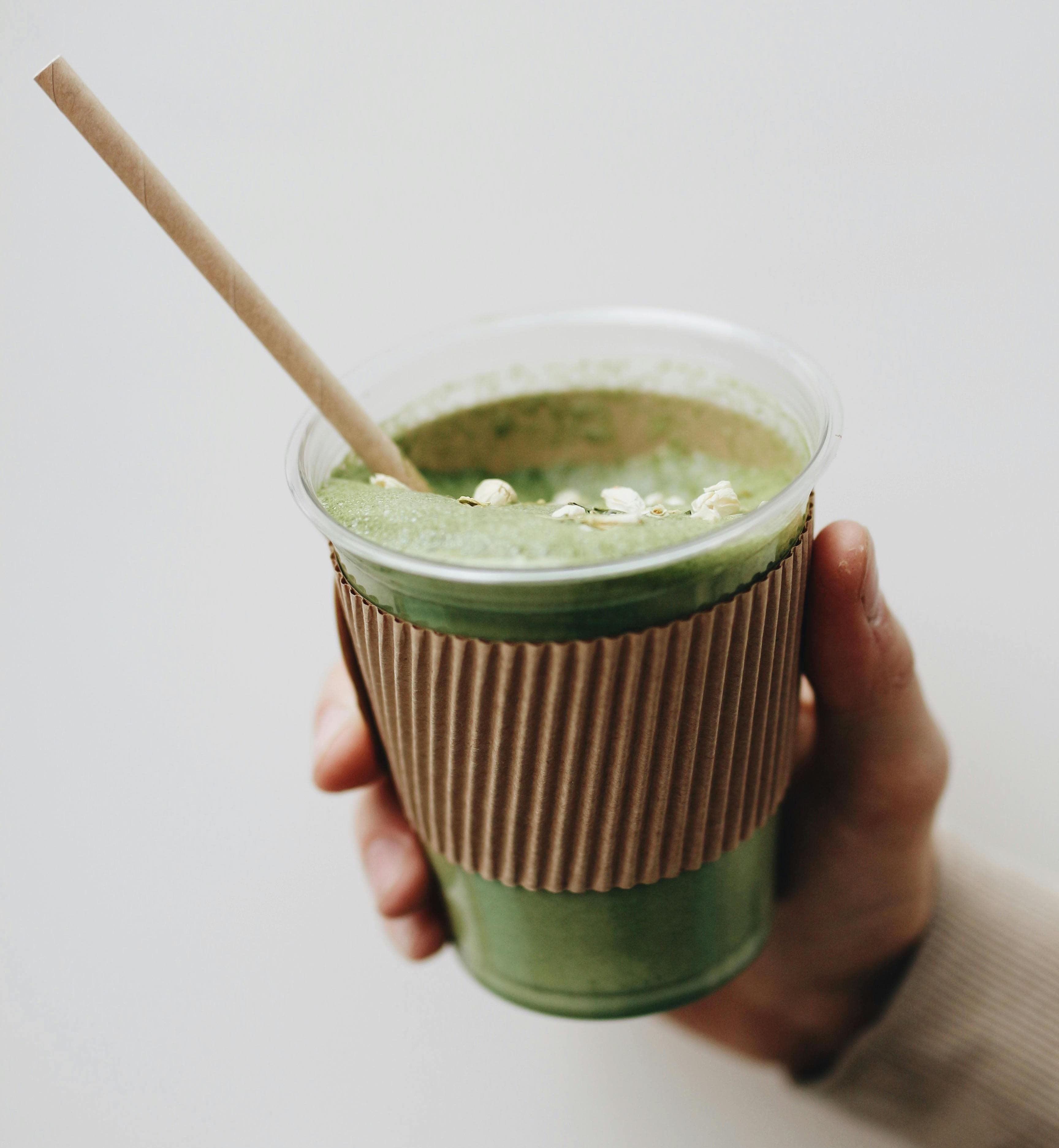 1.Matcha Tea
1.Matcha TeaMatcha tea is a smooth, vibrant green beverage made by whisking finely ground green tea leaves into hot water. Unlike regular green tea, where the leaves are steeped and removed, matcha is fully consumed, which gives it a fuller body and a richer, more complex flavor. The taste is a blend of grassy freshness, gentle bitterness, and a deep, savory umami that lingers pleasantly. High-quality matcha can be surprisingly sweet and creamy, while lower grades tend to be more astringent. Preparing matcha is as much about the process as it is about the drink itself. The powder is first sifted into a bowl to break up any clumps, then a small amount of hot water—usually around 80°C—is added. Using a bamboo whisk, called a chasen, the tea is briskly whisked in a zigzag motion until a layer of fine, soft foam forms on top. This foam not only looks appealing but also softens the tea’s natural bitterness, creating a silky texture and smooth mouthfeel. There are two primary styles of matcha tea: usucha and koicha. Usucha, or thin tea, is lighter and frothy, offering a refreshing and balanced flavor—this is the kind you’ll often find at cafés or casual settings. Koicha, or thick tea, uses more powder and less water, resulting in a dense, velvety texture with a bold, concentrated taste. Koicha is typically reserved for formal tea ceremonies, where the ritual of preparing and drinking it becomes a slow, meditative experience. The tea’s striking green color comes from how the tea plants are grown. For several weeks before harvest, the plants are shaded from sunlight, which boosts their chlorophyll content and preserves amino acids like theanine. This process enhances the tea’s umami flavor while reducing bitterness. It’s also what gives matcha its calming effect despite containing caffeine—the theanine promotes a sense of focused relaxation, making it popular with those seeking gentle alertness rather than the jittery kick of coffee. Though matcha has deep roots in Japanese tea culture, where it’s long been associated with mindfulness and simplicity, it’s found new life in modern drinks like lattes, iced teas, and smoothies. Whether enjoyed during a traditional tea gathering or as part of a morning ritual at home, drinking matcha is about more than just taste—it’s a small, calming moment of pause in a busy day.
- 2
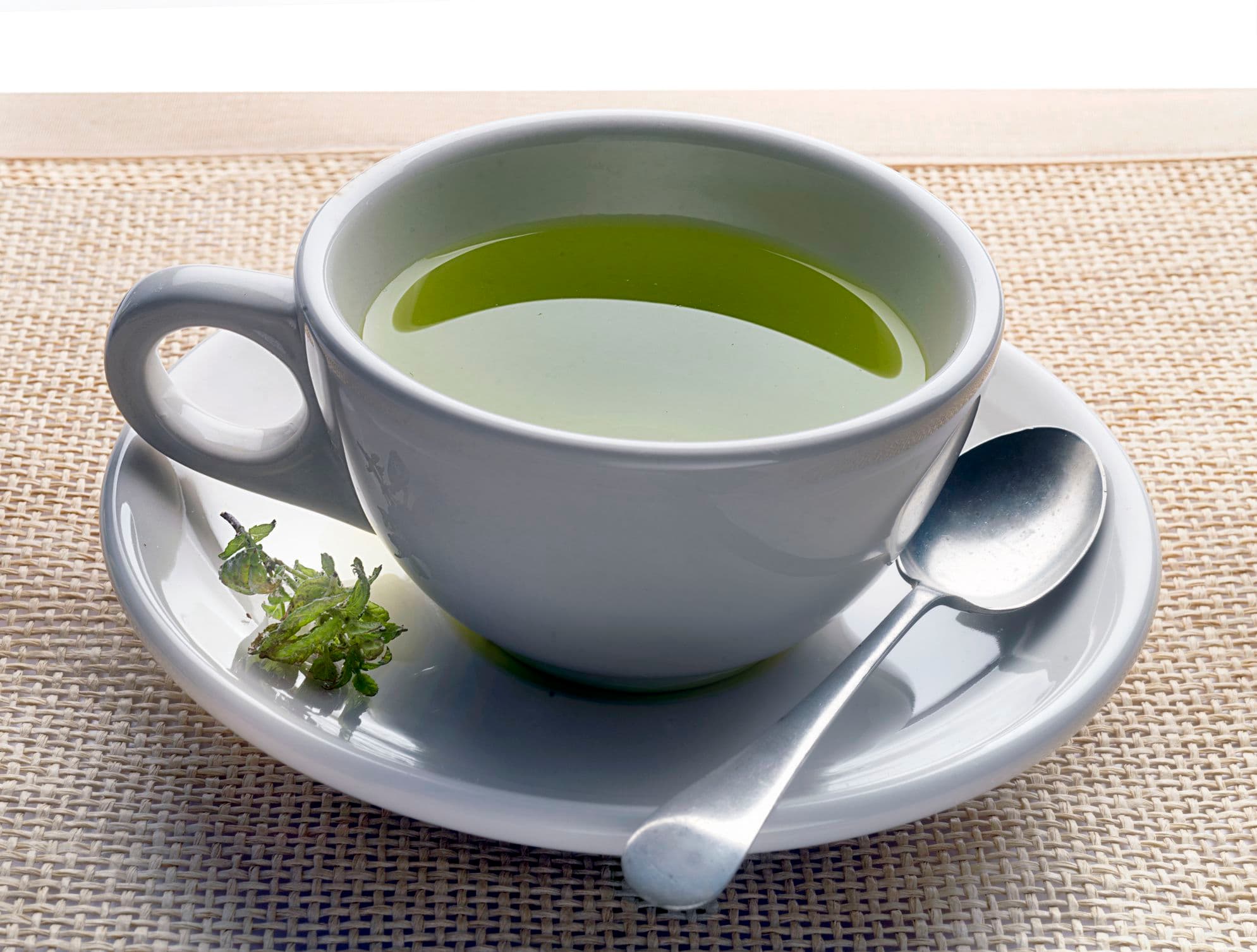 2.Green Tea
2.Green TeaGreen tea is a type of tea made from the leaves of the Camellia sinensis plant. Unlike black or oolong teas, green tea is made by heating the leaves soon after picking to prevent oxidation. This keeps the leaves green and gives the tea its fresh, grassy taste. It originally came from China but is now popular across East Asia, especially in Japan, Korea, and Vietnam. There are many kinds of green tea, depending on where it's grown, how it's processed, and when it's harvested. For example, Japan’s sencha is steamed, giving it a bright green color and a sweet flavor, while China’s longjing is pan-fired, making it more toasty and mellow. Making a cup is simple: just steep the leaves in hot water, but not boiling—usually around 70–80°C (160–175°F)—for a couple of minutes. If the water is too hot or you steep it too long, the tea can taste bitter. Green tea has been linked to many health claims, but the evidence is mixed. It does have some caffeine, though less than coffee, and contains antioxidants called catechins. People drink it for various reasons—some like the taste, some believe it helps with focus, and others just enjoy the ritual of making it. In the end, green tea is just a straightforward drink that’s been around for ages. Some people love it, some don’t—it’s really about what suits your taste.
- 2
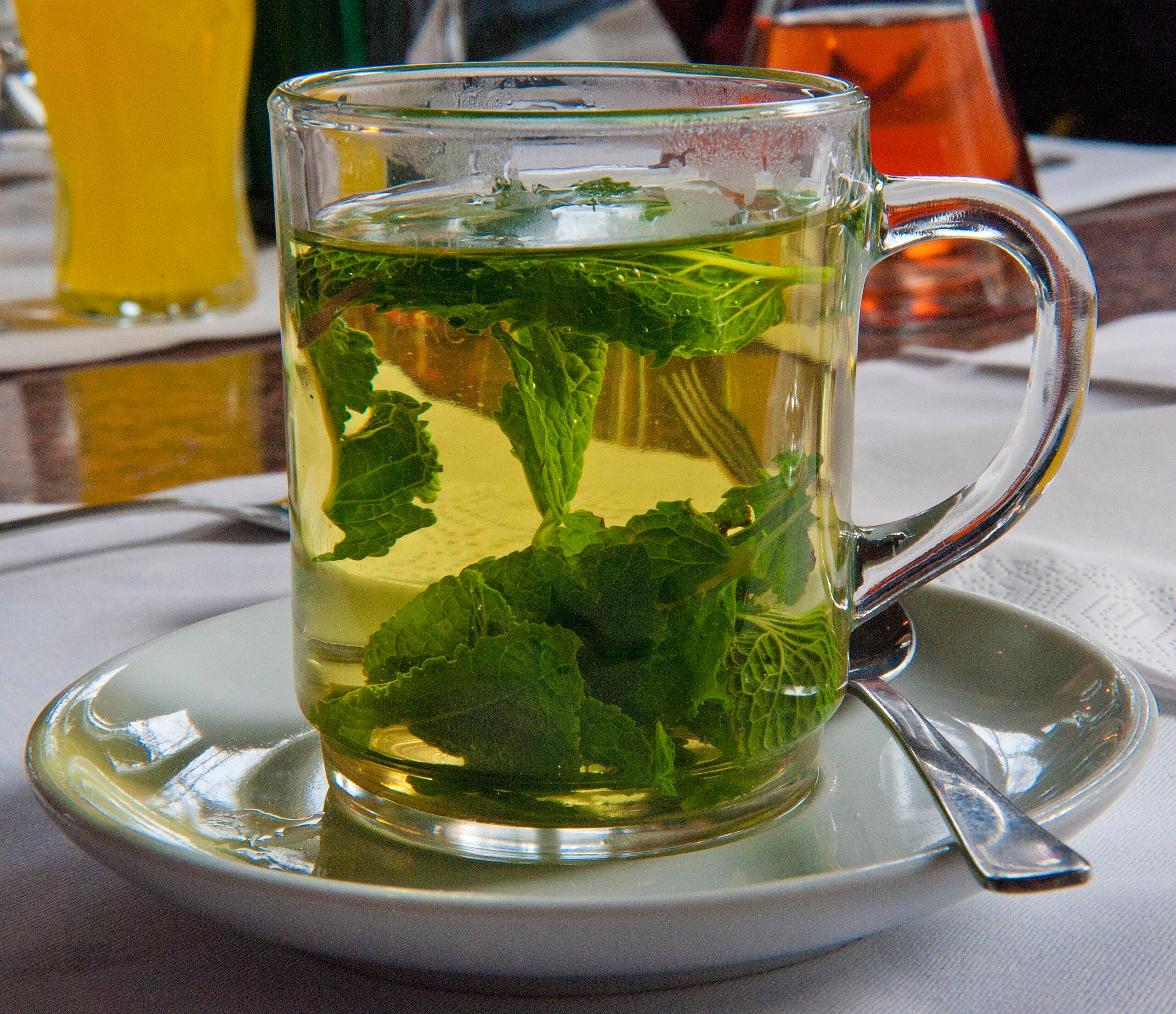 4.Mint Tea
4.Mint TeaMint tea is a warm drink made by soaking fresh or dried mint leaves in hot water. It’s simple—just mint and water—but the taste is fresh and cool, with a hint of sweetness depending on the type of mint you use. Peppermint tea has a stronger, sharper flavor, while spearmint tea is milder and a bit sweeter. People often drink it to relax or help with digestion. It’s popular in many places around the world—like in Morocco, where it’s made with green tea and lots of sugar, or in India, where mint is sometimes added to chai. In Korea, they have a version called bakha-cha. Making it is easy: boil some water, pour it over the mint leaves, let it sit for a few minutes, and you’re good to go. Some folks like adding honey or lemon, but it’s just as nice plain. The smell alone is pretty calming—fresh, like a garden after rain.
- 1
 5.Thai Tea
5.Thai TeaThai tea is a sweet, creamy drink made from strong black tea, usually Ceylon or a local version of Assam. It’s brewed with sugar and often flavored with condensed milk, giving it that rich, smooth taste and signature orange color. When served cold, it’s poured over ice, sometimes with a splash of evaporated milk on top for that creamy swirl. In Thailand, you’ll find it in tall glasses at restaurants or in plastic cups or bags from street vendors. Some places even turn it into a blended drink, like a frappé. There are variations too—like a version without milk called “dark Thai iced tea,” or one with lime for a citrusy kick. People drink it hot in the mornings as well, often with fried dough sticks.
- 1
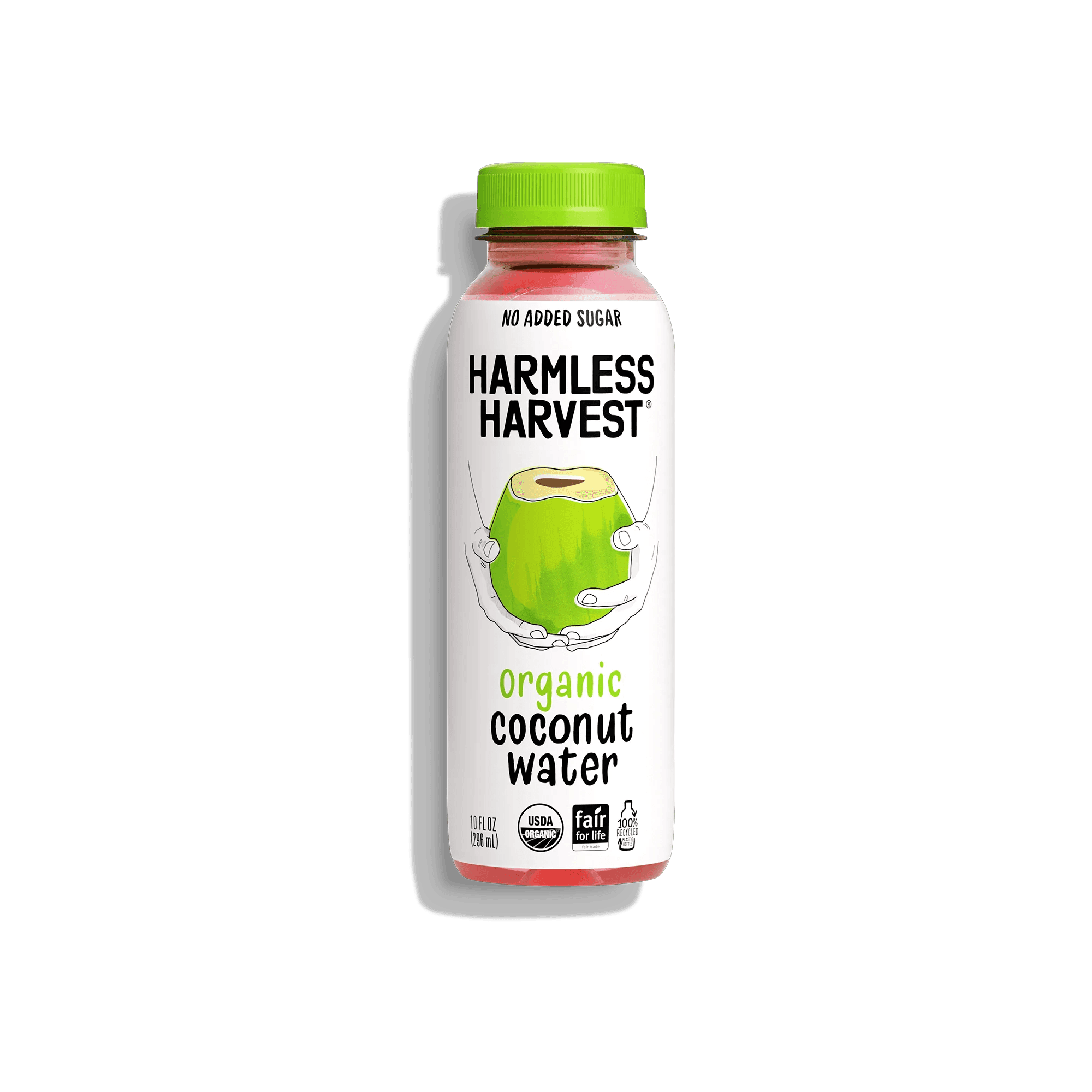 7.Harmless Harvest Organic Coconut Water
7.Harmless Harvest Organic Coconut WaterHarmless Harvest Organic Coconut Water is a pure, single-ingredient coconut water made from organic Thai coconuts. It stands out because of its naturally pink color, which happens due to antioxidants in the coconut water reacting with light and oxygen. The pink hue doesn’t change the taste—it’s still naturally sweet, crisp, and refreshing. This coconut water has no added sugar, preservatives, or artificial ingredients. It’s packed with electrolytes, including potassium, making it a good choice for hydration, whether you’re working out, recovering from a night out, or just looking for a refreshing drink. It can also be used in smoothies, cocktails, or just straight from the bottle. Harmless Harvest focuses on sustainability and ethical sourcing. Their coconut water is USDA Organic certified, Fair for Life certified, and their bottles (excluding the cap and label) are made from 100% recycled plastic. The company partners with organic farms that use sustainable farming practices, ensuring no synthetic fertilizers or pesticides are involved. The coconut water comes in various sizes, with a 10oz 12-pack priced at around $48. It’s available for purchase online and in stores. Since it’s perishable, it should be kept refrigerated once received. While it doesn’t require refrigeration during shipping, chilling it before drinking helps maintain its fresh, clean taste.
- 3
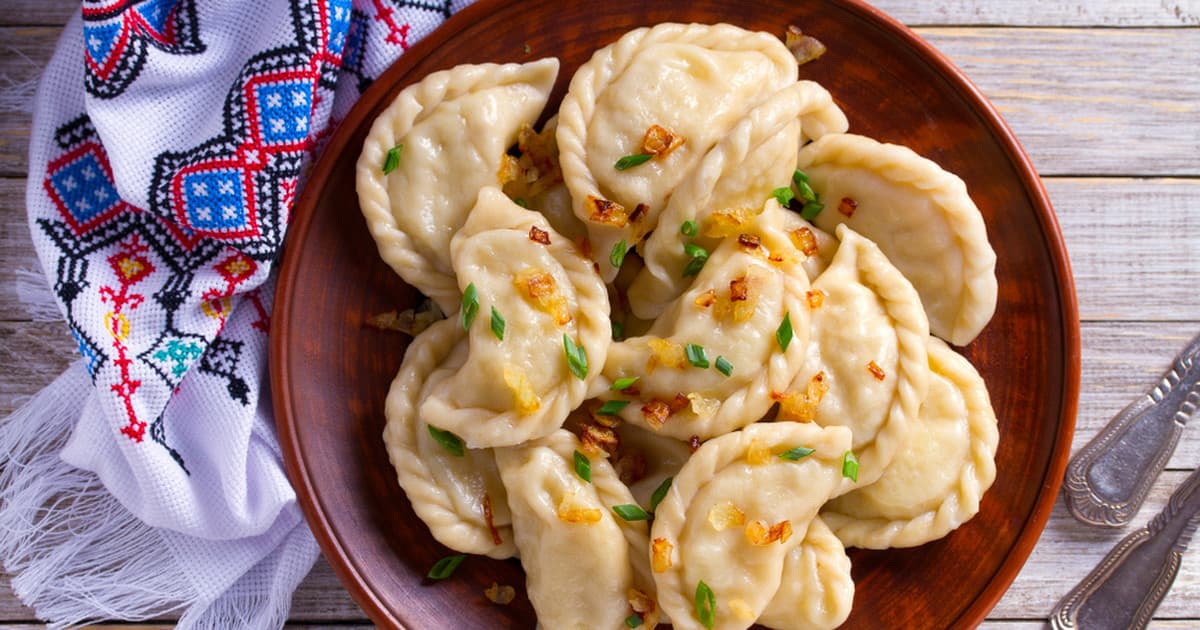 1.Polish Cuisine
1.Polish CuisinePolish cuisine is all about comfort, rich flavors, and tradition. It’s the kind of food that sticks to your ribs, perfect for long winters and big family gatherings. Think hearty soups, meat-heavy dishes, and a lot of potatoes, cabbage, and bread. Pierogi are probably the most famous Polish dish—soft dumplings filled with anything from potato and cheese to meat, mushrooms, or sweet fruits. Then there’s bigos, a slow-cooked hunter’s stew packed with sauerkraut, fresh cabbage, sausage, and sometimes even wild game. It’s the kind of dish that gets better the longer it sits. If you like schnitzel, you’ll love kotlet schabowy, a breaded pork cutlet usually served with mashed potatoes and pickled cucumber salad. And for something truly Polish, there’s żurek—a sour rye soup with sausage and egg, often served in a bread bowl. Poland is also big on fermented foods like ogórki kiszone (pickled cucumbers) and kapusta kiszona (sauerkraut), which add a tangy kick to meals. And if you have a sweet tooth, Polish desserts won’t disappoint—pączki (fluffy doughnuts filled with rose jam), sernik (a dense cheesecake), and makowiec (a poppy seed roll) are just the start. To wash it all down? Vodka, of course. Poland has been perfecting it for centuries. But if you prefer something milder, there’s always hot tea with lemon or kompot, a homemade fruit drink. Polish food is all about big portions, simple ingredients, and bold flavors. It’s the kind of cooking that makes you feel at home, no matter where you’re from.
- 3
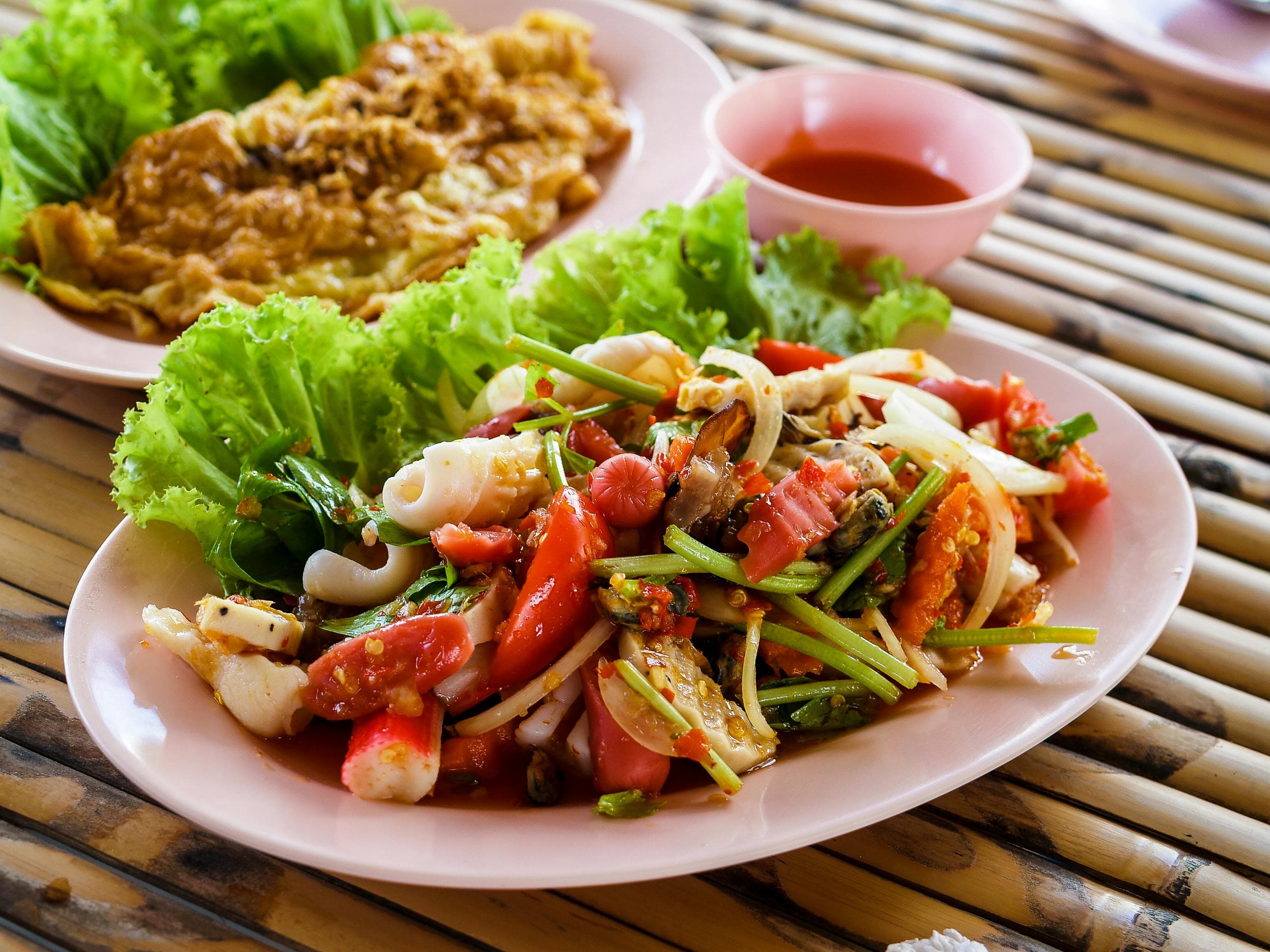 2.Thai Cuisine
2.Thai CuisineThai cuisine is all about bold flavors, fresh ingredients, and a balance of sweet, sour, salty, bitter, and spicy tastes. Every meal feels like a mix of contrasts that somehow just works. You’ve got fragrant herbs like lemongrass, Thai basil, and kaffir lime leaves, paired with staples like fish sauce, chili, and coconut milk. Rice is at the heart of it all—jasmine rice is common in central and southern Thailand, while sticky rice rules up north and in the northeast. Meals are usually shared. There’ll be a spread of dishes—maybe a curry, a stir-fry, a soup, and a salad—all eaten with rice in the middle. The idea is to balance flavors across the meal rather than in just one dish. You might get the rich creaminess of massaman curry alongside the sharp, spicy crunch of som tam (green papaya salad) and the comforting warmth of a clear broth like tom yum. Street food is a huge part of everyday life. Walk down any road and you’ll find vendors grilling skewers of marinated meat, tossing noodles in sizzling woks, or dishing up hot bowls of noodle soup. Grab a plate of pad Thai, a bag of fried chicken with sticky rice, or a steaming bowl of boat noodles from a floating market. And if you’ve got a sweet tooth, there’s mango sticky rice, coconut-based desserts, and crispy pancakes filled with sweet custard. Different regions have their own twist. In the north, dishes like khao soi—a curry noodle soup topped with crispy noodles—are popular, while the northeast (Isan) is known for grilled meats, sticky rice, and punchy salads. Down south, expect fiery curries with plenty of coconut milk and fresh seafood. Even breakfast can be exciting—sometimes just rice and an omelet, other times noodle soups or patongko (Thai donuts) with sweetened condensed milk. No matter where you go in Thailand, the food is vibrant, flavorful, and often made to be enjoyed with others. It’s comforting, lively, and always about that perfect mix of flavors.
- 0
 24.Black Headshots
24.Black HeadshotsBlackHeadshots is the first AI headshots solution specifically trained for BIPOC skin tones and features. Are you tired of headshots that don't capture your true essence? Say hello to BlackHeadshots.com – your go-to destination for stunning, professional headshots that celebrate the richness and diversity of Black skin tones and features. Why Choose BlackHeadshots.com? - Expertise in Black Beauty: Our specialized technology and skilled professionals understand the nuances of photographing diverse skin tones, ensuring your unique features shine. - Lightning-Fast Results: Get your perfect headshot in minutes, not days. We've streamlined the process without compromising on quality. - Versatility at Your Fingertips: Whether it's for your LinkedIn profile, resume, or portfolio, we've got you covered with a range of styles to suit every professional need. - Affordable Excellence: Say goodbye to expensive photo sessions. We offer top-tier results at a fraction of the cost of traditional photography services. - Convenience Redefined: No need to schedule appointments or travel to a studio. Get your professional headshot from the comfort of your home or office. How It Works 1. Upload your photo 2. Choose your preferred style 3. Let our AI-powered technology work its magic 4. Review and download your professional headshot in minutes Don't let subpar headshots hold you back. With BlackHeadshots.com, put your best face forward and make a lasting impression in the professional world. Visit BlackHeadshots.com today and elevate your professional image!
- 0
 38.Unwatermark
38.UnwatermarkUnwatermark’s Image and Video Watermark Removal feature is a highly advanced tool that leverages powerful algorithms to deliver precise and efficient results. For images, the tool can detect and seamlessly erase watermarks from various locations and sizes, restoring the original quality of the image without leaving any traces or distortions. This ensures a clean, professional appearance, making it ideal for photographers, designers, and social media managers. For video content, the watermark removal process is just as efficient. Unwatermark can remove watermarks from videos frame by frame, ensuring smooth playback and high visual quality throughout. This capability is crucial for content creators, videographers, and marketing professionals who need unbranded, professional-grade videos without the hassle of manual editing. Whether for personal projects or professional use, the tool offers a fast, reliable solution for anyone needing to remove unwanted watermarks from visual content.
- 0
 44.Presence
44.PresenceSleep better, relieve stress, and find purpose with Presence - your total guide to well-being. Take the next step on your journey with proven practices for integrated and holistic self-care. For 20 years, we've been empowering millions of people to balance their bodies, revive their minds, and activate their spirits. Now, for the first time, you can easily access our expert knowledge in one easy to use app. Whether you’re new to meditation and mindfulness, or you're an advanced practitioner, find your peace on a path that suits you. Relax with our best meditations, self-care tools, tips, and practices for your well-being based on our unique wisdom and scientific research. With an extensive library of knowledge for your mind, body, and spirit, plus new meditations featured daily, Presence is specially designed to help you discover your best self. Transform your health & well-being by: - Learning how to meditate - Finding immediate relief from daily stressors - Discovering your unique you - mind, body & spirit - Going deeper on your journey to self-discovery and purpose Uncover a range of popular topics including: - Better Sleep - Stress & Anxiety Relief - Peace & Calm - Confidence, Purpose & Success - Health, Weight & Increased Energy - Relationships & Connection - Creativity & Consciousness - Personal & Spiritual Growth Chopra's complete guide to mind, body and spirit comes with: - Over 500 meditations and practices representing our best tools - A variety of well-being experts to guide your experience - 5, 10, 20 and 30-minute sessions to suit your needs wherever you are - Our most popular well-being challenges including our 21-Day and Journey to Well-being programs - A quiz to discover your unique mind-body type and receive personalized content designed for you - Daily recommended sessions to build your practice - Monthly new programs and collections - Personalized tracking to help you stay motivated and see your progress
- 1
 1.Earth.fm app
1.Earth.fm appEarth.fm is a kind of a digital retreat where you can immerse yourself in the sounds of nature. It’s designed to help people unwind, reconnect with the Earth, meditate, and focus. Key Features: - Nature Soundscapes: A curated collection of soothing nature recordings from around the globe. - Interactive Soundmap: Explore sounds from different regions using a world map. - Mobile App: Enjoy nature's sounds wherever you are. - Quiet Places: Discover and learn about tranquil locations worldwide. - Support for Recordings: Encourages new contributions through grants. Benefits: Earth.fm offers a natural way to reduce stress, enhance focus, and nurture a connection with the environment. Whether you’re looking to meditate, work, or relax, the platform’s serene soundscapes provide an easy escape from the busyness of daily life. Use Cases: Perfect for anyone needing a moment of calm, Earth.fm is ideal for background sounds during work or study, meditation sessions, or simply unwinding after a long day. It’s also a great resource for nature lovers who want to explore the sounds of different ecosystems around the world.
- 1
 1.SafeSelect - Simple Safe Shopping. Keep toxic products out of your home
1.SafeSelect - Simple Safe Shopping. Keep toxic products out of your homeFeatures: - Checks Food and Personal Care ingredients for toxins, allergens, or diet restrictions on any site - Effortlessly auto-scans Amazon product pages for harmful ingredients - Highlight text and right-click for manual ingredient scans on any site - Scans images of ingredient lists for harmful substances - Update your user profile with allergy or diet information for personalized ingredient checks - Alerts for thousands of ingredients that are known or suspected to cause cancer, interfere with hormones, harm fertility, cause birth defects or developmental issues, trigger allergies, or are otherwise banned or restricted. - Free to use, unbiased, and ad-free. - Centered on privacy – we don't even require your email. SafeSelect: Your Wellness Ally in Smart Online Shopping Tired of researching product ingredients in food and personal care items? SafeSelect makes it simple. SafeSelect tells you which products are safe and which aren’t, so you don’t have to. Avoiding toxic ingredients? On a diet? Have allergies? SafeSelect has you covered. Regulations often lag behind science, leaving harmful ingredients in everyday products. It’s up to us to stay informed and protect our health. But keeping track of countless additives and staying updated with new research is overwhelming. SafeSelect helps you shop safely and intentionally. It takes the burden of research off your shoulders.
- 1
 2.Breathworx
2.BreathworxBreathworx is an on-demand breathwork service designed for stress relief, decision clarity, and a happier mood, with guaranteed results in a single session—even for those who “can’t meditate.” Folks who’ve tried it say they: Feel less “in their head” generally Feel an overwhelming sense of gratitude and clarity Feel more confident, calm, & authentic in social situations Get clearer answers in big decision making Relieve stress, anxiety, heartbreak, loss, and depression Have more reliable stress coping mechanisms Release the “emotional gunk” that builds in them Feel more grounded and in touch with their bodies Are less reactive in difficult situations The classes primarily use guided meditations and Circular Breathwork, a simple technique involving 2 breaths in (belly, then chest) and 1 breath out, all through the mouth. Also known as 2-part breathwork, holotropic breathwork, or triangle breathing, this method yields transformative results in a short amount of time. Breathworx offers both full-length 40-60 minute sessions and shorter 10-20 minute versions, accessible on any browser or device, anytime. Whether you use this "cheat code" once a week, once a month, or daily during particularly hard times, it's all up to you. Many people find that even a single class is worth more than years of therapy, where one session can cost more than a yearly Breathworx membership. In fact, if you take just one full class a year, you’ll likely value the benefits beyond the yearly subscription price. Most in-person classes have about 30 minutes of breathing wrapped in some meditation or gratitude practice, making for about 45 minutes total. Breathworx offers similar formats, as well as shorter versions, ensuring there's a session that fits your schedule and needs. Whether you're looking to relieve stress, gain clarity, or simply add a powerful tool to your wellness toolkit, Breathworx is designed to be as transformational, enjoyable, and meaningful as possible.
- 2
 2.Piri Piri Roast Chicken
2.Piri Piri Roast ChickenPiri Piri roast chicken is arguably the best dish for those who cherish bold flavours and succulent meat. The dish’s main draw is the Piri Piri sauce—a fiery blend of chilli peppers, garlic, lemon, and herbs that hails from Portuguese cuisine but is infused with African influence, giving it a tantalizing kick. The chicken is marinated in this spicy sauce, allowing the robust flavours to penetrate deeply and ensuring every bite is infused with spice and zest. Roasted to perfection, the skin becomes crispy and golden, while the meat inside remains tender and juicy. This delightful contrast in textures, combined with the heat from the Piri Piri sauce, offers a sensory experience that is both satisfying and exhilarating. The dish’s simplicity, requiring few ingredients but delivering complex flavour profiles, makes Piri Piri roast chicken not just a meal but an experience—one that celebrates the harmony of heat, spice, and expert culinary technique.
- 0
 1.Black Panther
1.Black Panther"Black Panther" is a groundbreaking Marvel Cinematic Universe (MCU) film directed by Ryan Coogler. It follows T'Challa, the newly crowned king of the hidden, technologically advanced African nation of Wakanda, as he takes on the mantle of Black Panther. The film explores themes of identity, legacy, and power, while showcasing vibrant African culture and cutting-edge technology. It features a stellar cast, including Chadwick Boseman, Michael B. Jordan, Lupita Nyong'o, and Danai Gurira, and delivers a compelling mix of action, drama, and political intrigue.
- 3
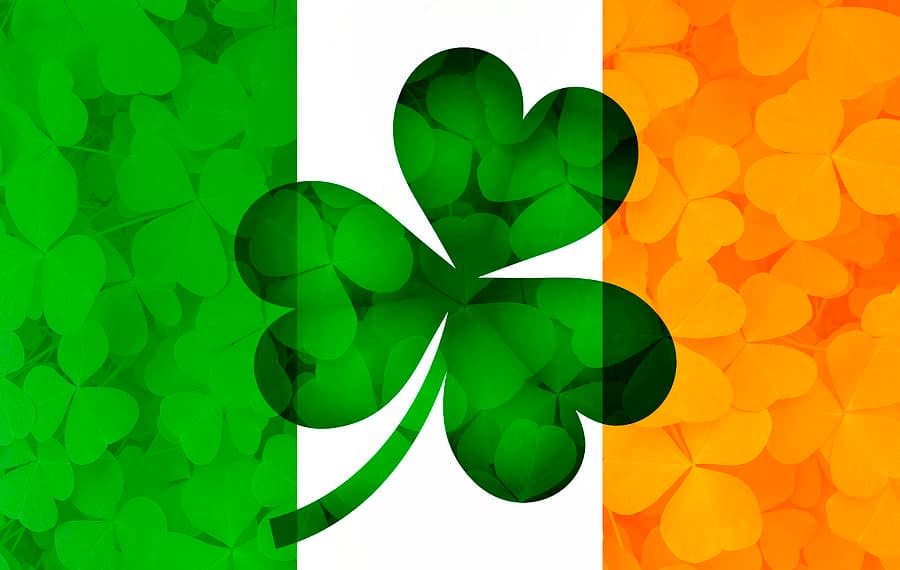 1.Ireland
1.IrelandIreland is a small country with a big presence. Its capital, Dublin, is a lively city known for its mix of history, culture, and modern energy. Walk through the streets and you’ll find Georgian buildings, contemporary architecture, and plenty of places to hear live music or have a chat over a coffee—or a pint. The country has changed a lot over the past few decades. Once more rural and conservative, modern Ireland is progressive and increasingly diverse. It's known for its strong economy, driven in part by tech and finance companies that have set up shop in Dublin. But away from the business districts, life moves at a slower pace, especially in smaller towns and the countryside. Culture runs deep. Ireland has long punched above its weight in literature, music, and the arts. Writers like James Joyce and W.B. Yeats are still celebrated, but contemporary authors, filmmakers, and musicians continue to make their mark. Traditional Irish music hasn’t faded—it just sits comfortably alongside modern genres, often blending with them in interesting ways. Dance, especially the kind popularized by Riverdance, remains part of the cultural fabric without feeling forced or overly nostalgic. Food in Ireland has shifted from its meat-and-potatoes reputation. While hearty stews and fresh-baked bread are still common, there’s been a focus on fresh, local ingredients and creative cooking. In coastal areas, you’ll find top-quality seafood, and farmers' markets are popular across the country. Sport plays a big part in daily life. Gaelic games like football and hurling are uniquely Irish and deeply connected to local pride, but people follow soccer, rugby, and golf with just as much enthusiasm. While Ireland’s landscape is famous—green fields, dramatic coastlines, and rugged hills—it’s not just postcard scenery. Many people live in suburban areas, and the country has seen growing urban development. Still, nature is never far away. Ireland’s recent history includes both economic highs and lows, as well as major social changes. The country has legalized same-sex marriage, eased restrictions on abortion, and shifted away from the strong influence of the Catholic Church. Yet, traditional values like community and hospitality haven’t disappeared—they’ve just adapted to a changing world. At its core, Ireland is a place that blends the old with the new. It’s a country where centuries-old traditions coexist with modern ideas, where the past is present but doesn’t overshadow the future.
- 0
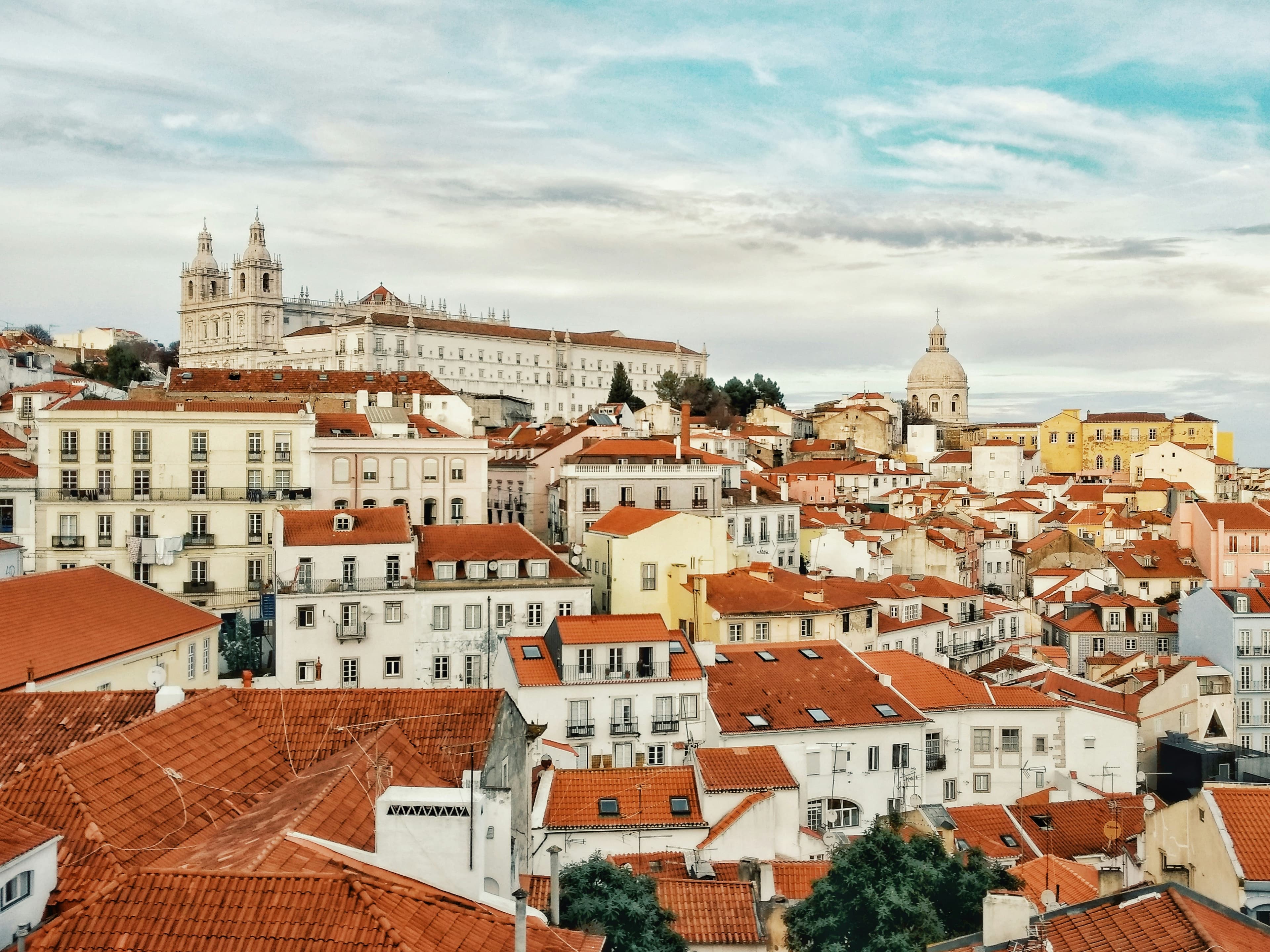 3.Lisbon, Portugal
3.Lisbon, PortugalLisbon sits on the western edge of Europe, right where the Tagus River meets the Atlantic Ocean. The city is built on a series of hills, which gives it sweeping views of red-tiled rooftops, cobbled streets, and the water beyond. Walking around, you’ll notice how the narrow lanes twist and turn, especially in neighborhoods like Alfama, where clotheslines stretch between buildings and the smell of grilled sardines lingers in the air. It’s a place where old and new blend together. You’ll find trams from the early 20th century rattling through streets, while modern glass buildings rise up in other parts of town. Down by the river, the Belém Tower and Jerónimos Monastery, both from the Age of Discovery, remind you that Portuguese explorers once set out from this very spot. Lisbon gets plenty of sunshine—nearly 3,000 hours a year. Summers are warm and dry, while winters stay cool and damp, but not too cold. Along the riverbanks, locals sit at cafés, sipping coffee or wine, while ferry boats glide across the water. Economically, Lisbon is Portugal’s hub, with banking, tech companies, and tourism bringing in most of the money. There’s a steady flow of visitors, drawn by the mild weather, historic sites, and laid-back vibe. Despite the city’s modernization, many residents struggle with rising living costs, especially with the influx of tourists and expats driving up housing prices. Culturally, the city is rich. Fado music echoes from small bars, and street art colors many walls. Markets buzz with fresh produce and seafood. People here celebrate Saint Anthony’s festival in June with street parties, music, and grilled sardines everywhere you look. Getting around is easy enough. There’s an extensive metro system, old-school trams, buses, and even ferries to cross the river. And if you fancy a bit of green space, parks like Eduardo VII Park or Monsanto Forest Park offer a break from the city streets. In short, Lisbon is a city that wears its history proudly but doesn’t mind embracing the modern world. It’s got a relaxed pace, friendly locals, and a charm that’s hard to shake.
- 1
 1.The Black Swan
1.The Black Swan"The Black Swan" by Nassim Nicholas Taleb is a seminal work that explores the profound impact of rare and unpredictable events, termed "Black Swans." Taleb argues that these events, which are often overlooked or underestimated, have massive consequences on our world. He highlights the limitations of traditional forecasting methods and emphasizes the need for resilience and adaptability in the face of uncertainty. Blending philosophy, economics, and personal anecdotes, Taleb provides a compelling critique of our understanding of risk and uncertainty. This book is essential for anyone interested in risk management, economics, and understanding the unpredictable nature of our world.
- 1
 5.Dark
5.DarkDark is a critically acclaimed German sci-fi thriller series that delves into complex time travel and intertwining family secrets. Created by Baran bo Odar and Jantje Friese, this Netflix series spans three seasons and follows the residents of the small town of Winden as they uncover a series of mysterious events linked to different time periods. The story centers around four interconnected families and the intricate web of time loops that bind them. With its dark atmosphere and intricate plot, Dark keeps viewers captivated from start to finish.
